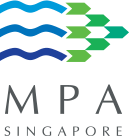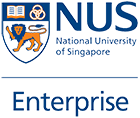Developing next generation wind assist technology to improve fuel efficiency
Key Focus Area:
Maritime Green Technologies
BACKGROUND
Wind Assist Ship Propulsion (WASP) has seen a revival of interest in various wind sail technologies for ships. At the International Maritime Organisation (IMO) level, the technology has been identified as one of the key technologies to reduce fuel consumption on ships. Thereby, reducing carbon emissions and fuel costs. As such, how might we develop the next generation wind assist technology to bring them into the 21st century?
SIGNIFICANCE OF PROBLEM
- WASP is not necessarily new, but innovative startups has brought about various wind sail technologies (flettner rotors, suction sails, rigid sails, soft sails, kite sails etc.) to the maritime market.
- It is a renewable energy source and can be harnessed effectively on many trade routes with high commercial shipping traffic.
- Many concepts for wind assist propulsion are still nascent and have not reached an acceptable technology readiness level for shipping companies.
POTENTIAL MARKET SIZE
- Applicable to both new and existing ships, its estimated to grow from a USD 300 Million a year in this decade to USD 2.5 Billion a year market in the 2050s globally.
EXISTING EFFORTS
- Fletter rotors, Rigid Sails, Soft Sails, Kite Sails & Suction sails are some examples of current solutions in various stages of development.
- Control systems incorporate weather data and AI modelling to effectively adjust operational parameters.
SOLUTION SUCCESS PARAMETERS
- Effectiveness in various wind conditions and weather patterns related to trade routes.
- Compact enough to be able to fit on a deck of a tanker, Ro-Ro Vessel, bulk carrier or container ship.
- Ability t to be retracted or folded to avoid collisions with port structures or bridges.
POTENTIAL SOLUTION SPACES
- Sail designs which are effective and suitable for use on various vessel types.
- Able to maximize wind power at various directions and with minimum crew intervention.
- Easy to install during drydocking for retrofits.


